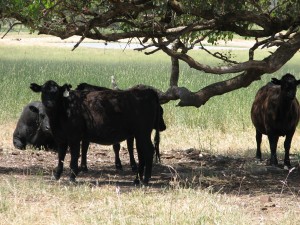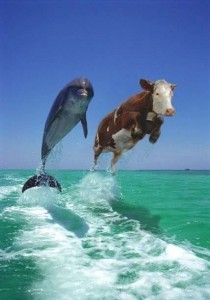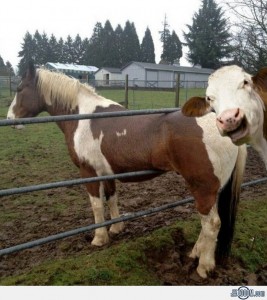On Mark’s encouragement, I decided to venture into livestock futures this week. I chose to focus my attention on live cattle futures in the first instance due to interest and background (and so as not to completely overwhelm myself!). On our farm, “Koombahla” in Australia, we run Angus cattle and also a small contingent of Herefords (as part of Mum’s ‘Burra Hereford’ stud, which my late maternal grandfather established in 1929).
My aim this week was to understand the trading of live cattle, past trends, the types of information that affected prices, relationships between other future commodities, and hopefully during all this, make a purchase! I hope the readers learn a little along with me!
Some of our Angus heifer’s relaxing out of the hot Summer sun…
But would probably rather be here…
————————–
So, what did I learn about live cattle futures?
1. Contract specifications are a little different than other commodities
Live Cattle futures are delivered every year in February, April, June, August, October, and December. The unit of trading is 40,000 pounds (18 metric tonnes) and is comprised of 55% Choice, 45% Select grade live steers (as defined by the USDA). These quality grades help to determine the difference between cuts of meat. A quality grade, according to the USDA is an evaluation of characteristics that affect palatability of meat, such as the age of carcass, texture, and the amount of marbling. USDA Choice beef is the second highest grade on the scale, after Prime, and Select beef is the lowest grade of beef that you will find at a grocery store or restaurant.
2. Corn is an important determinant in the price of live cattle
Cattle are usually fed corn, milo (also known as grain sorghum) and sometimes wheat. The protein part of their diet usually comes from soybeans. If corn gets cheaper, livestock producers might be prompted to feed more cattle to nourish them to gain weight. However, if feed is too costly, cattle may also be sent to market earlier and at lower weights. This may have a downward effect on the price of cattle futures.
3. Like all futures trading, it is a risky business, that is affected by a number of supply and demand factors
Very hot weather can result in cattle not gaining normal weight as they tend to eat smaller amounts. It can also result in loss of calves and yearlings. Conversely, very cold weather causes stress in cattle and excess burning of energy to stay warm. Less weight = less meat.
Disease can also have a major effect. Bovine Spongiform Encephalopathy (more commonly, ‘Mad Cow Disease’), has affected live cattle prices in the past due to the significant public health concern that arises when news of the disease becomes known.
Additionally, general economic conditions, seasonality (BBQ’s in summer) and changing consumer incomes (lower purchasing power may lead to substitution to cheaper protein sources) can have a direct impact on the demand for beef and the price of cattle.
4. The report to read for cattle futures is the The Cattle on Feed Report
The USDA Report contains monthly total number of cattle, calves on feed (amount of cattle placed on feedlot), placements, and marketings. It is usually a big market mover, however is not available again until October 18 (hopefully the US Gov’t will be back online by then!)
Get your act together please!
————————–
So I decided to take the plunge and put my limited knowledge into action…
It was a strange week for trading on the back of the Grains Report and US Government shutdown early in the week.
Following the USDA Report and the bearish stocks data, both soybeans and corn futures fell. Cattle futures were also down 27-32 cents on Monday. Mixed messages were coming from the Government shut down, with many of the losses that occurred before the closure being recovered. The lack of price data coming through kept everything pretty on edge.
Unable to make any solid decisions, I decided to work with what I had. Corn and soy futures prices had been dropping since I entered the traded game. This may preclude increased purchase by farmers to feed their cattle, increasing their weight and value. I decided not to focus on October futures, which may be too close to feel the effects of cheaper feed. I looked to short Dec 2013 and Feb 2014 Live Cattle Futures in the hope that cheaper soy and corn in Dec and Nov may have an effect on live cattle in feedlots.
As I am writing this, I have just realized I made a little mistake in my purchases; rather than shorting both, I accidentally bought long on the Dec contract 🙁 At this stage, my shorted contract is in the green and the mistake contract is the red… DAMN!!! Mmm, maybe the error will pay off in the long run and I will net off any losses made.
Anyway, this little play in live cattle will prove or disprove itself over the next month/s, not immediately, so I will hold on! In other news, both my shorted corn and long wheat are still trucking along nicely!
Feb 2014 Live Cattle – hoping these guys have hit their peak and will drop with cheaper feed contracts closing soon
My open positions as at 2 Oct 2014
Dorothy wishes you all a fabulous weekend!








3 responses to “Just an udder trading week….”